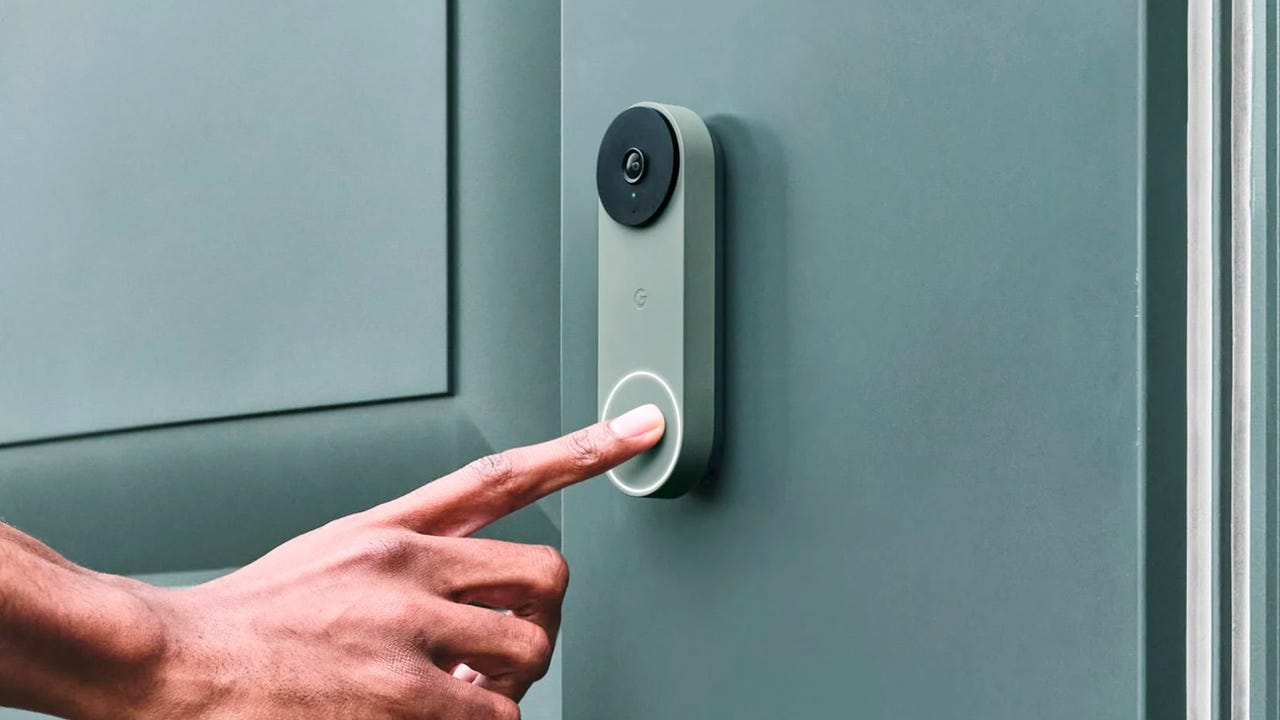
My wife and I recently decided to exchange our Ring Doorbells with Google Nest Doorbells. The reason was twofold: we were already deeply embedded with the Google ecosystem, and our Ring Doorbells had always been flaky (sometimes they’d work, sometimes they wouldn’t).
This switch was also prompted by replacing our Alexa devices with Google Home Speakers. Those speakers were brought about after we switched our ISP and Alexa refused to connect to the new network, even after a factory reset. When the Google Home Speakers arrived, it took me two minutes to have them both setup and working perfectly. Those speakers sounded every bit as good as Alexa and performed equally as well.
Also: The best wireless doorbells you can buy: Google, Ring, and Nest compared
I thought it stood to reason that the Google Nest Doorbell would then be just as easy to install and set up. But I was wrong — very wrong.
First off, the official Google documentation was inaccurate on a number of levels. That lack of detial meant I was on my own getting this new doorbell configured. After about an hour, I finally managed to get the device working. However, the problem was that I couldn’t recall how I did it. And because the documentation was wrong, I knew if I had to re-create my solution, I’d be in trouble.
And, naturally, I had to recreate my solution, as my wife needed to get notifications of activity at the front door on her phone. That process should have been simple, but it wasn’t. And here’s why I think I ran up against some problems.
Also: The best Ring doorbells (and how to pick the right one for your home)
Google bought Nest in 2014. That purchase meant the tech giant had to blend Nest into its ecosystem. Once you get the Nest Doorbell set up, the integration works well — you can send Nest Doorbell alerts to your Google Home Speakers to never miss anyone at your door. However, it’s the setup that has failed the product.
The biggest problem that I see is accounts. There’s a Nest account and a Google account and ne’er the twain shall confront. From my perspective, Google should have simply done away with the Nest account and fully integrated the Nest Doorbell into the Google account. That way, all a user would have to do is associate the Doorbell with their Google account and everything would be simple and seamless.
Unfortunately, that’s not exactly how the system works. And that issue dramatically complicates the setup of Google Nest Doorbells. And if I found it tough to get the device working, I can only imagine how much trouble someone might have who doesn’t deal with technology every day.
However, this kind of issue isn’t isolated to Google. Companies acquire products from other companies all the time. I’ve experienced this situation on numerous occasions and it’s frustrating. When documentation doesn’t jibe with what you see before you, or there are multiple accounts necessary that sometimes conflict with one another, things go wrong. I’ve been a first-hand witness for this kind of issue on both the consumer and admin level, and it causes more problems than it solves.
So, when a company acquires the product of another company, they should consider the following steps:
- Shore up documentation, making sure it is 100% accurate
- Do away with the need for redundant accounts
- Fully blend the product into the company ecosystem before release
- facilitate the installation and setup such that consumers don’t have to resort to a Google explore to figure out each step of the process
I grasp that companies want to do the bare minimum necessary to save the bottom line. But when that bare minimum directly affects consumers, you risk bumping into what I’ll refer to as the Ford Pinto problem. Ford could have saved lives by simply adding a bladder to the gas tank of the Pinto. Instead, they decided it would cost them less to settle lawsuits.
With the Google Nest configuation problem, Google risks having to deal with a high number of returns when consumers unearth the configuration of the Nest Doorbell isn’t nearly as simple as it should be. Granted, I was coming at this problem with a very specific need, but it wasn’t exactly a configuration that was far outside the norm. And seeing as how most Google products are ridiculously easy to set up, it came as a shock to me that the Nest Doorbell didn’t follow suit.
Also: The best cheap video doorbells
And this is not to say Google Nest Doorbells aren’t worth purchasing. Trust me when I say that once I managed to get the device up and running, it has far exceeded my experience with Ring. The audio and video quality is considerably better, the Nest Doorbell always rings when pushed, and it doesn’t necessitate a subscription to view video recordings — Nest saves the last 3 hours for free, whereas Ring doesn’t save any recording periods for a free account. So, configuration aside, I’m glad I switched to Google Nest Doorbell because I feel I can count on the technology to never miss a ring.
Don’t let this tale scare you away from giving Google Nest Doorbell a try. The product is rock solid, but just a bit tricky to get up and running. If you’re not good with technology, you might consider hiring someone to take care of that side for you. Otherwise, you might find yourself getting frustrated enough to box it up and send it back.

